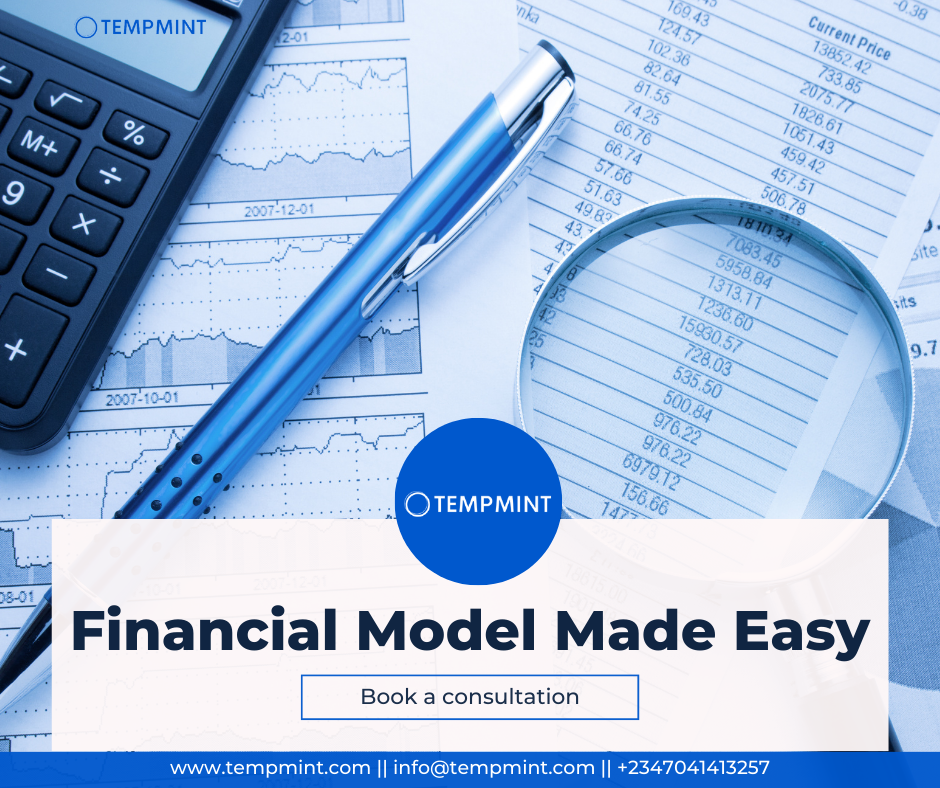So you’ve got a brilliant business idea, a killer pitch deck, and a burning passion to take your startup to the next level. But before you can impress investors and secure that coveted funding, there’s one crucial hurdle to overcome: the financial model.
The financial model is the roadmap that showcases your startup’s financial future. It tells investors how you plan to make money, where your expenses will go, and, most importantly, when you’ll achieve profitability.
While it might seem daunting, especially if you’re not an accounting guru, fear not! Here’s the secret formula for building a winning financial model, even without a finance degree.
The Three Pillars of a Winning Financial Model:
Your financial model rests on three core statements:
- Income Statement (P&L): This reveals your revenue streams, cost of goods sold, operating expenses, and ultimately, your net profit or loss.
- Balance Sheet: This provides a snapshot of your company’s financial health at a specific point in time, showing your assets, liabilities, and shareholders’ equity.
- Cash Flow Statement: This tracks the movement of cash in and out of your business, highlighting how you’ll manage your cash flow to meet your financial obligations.
These statements work together to paint a comprehensive picture of your startup’s financial journey.

Building the Model: Step-by-Step
Here’s a breakdown of building each statement, focusing on practicality and clear communication:
1. Income Statement (P&L):
- Revenue: Define your revenue streams—how will you generate income? Will you sell products, services, or subscriptions? Clearly outline the unit economics—how much revenue will you generate per customer or unit sold?
- Cost of Goods Sold (COGS): If you sell products, factor in the cost of producing or acquiring them.
- Operating Expenses (OpEx): This includes all the costs associated with running your business—marketing, salaries, rent, software subscriptions, etc. Research industry benchmarks for OpEx to set realistic projections.
Pro-Tip: Build a customer acquisition model to estimate how many customers you’ll acquire per month/year and at what cost.
2. Balance Sheet:
- Assets: List all your company’s valuable resources—cash, inventory, equipment, etc.
- Liabilities: Show what you owe—loans, accounts payable, etc.
- Shareholders’ Equity: This represents the investment from founders and shareholders.
Pro-Tip: Don’t forget to account for depreciation, the gradual decrease in value of your assets over time.
3. Cash Flow Statement:
- Cash Flow from Operations: This reflects your net cash generated from your core business activities (revenue minus operating expenses).
- Cash Flow from Investing: Includes activities like buying or selling equipment or property.
- Cash Flow from Financing: This shows how you raise and manage funding (debt or equity).
Pro-Tip: Your cash flow statement is crucial for investors. Demonstrate how you’ll manage your cash flow to avoid running out of money before achieving profitability.
Making it Shine: Assumptions & Sensitivity Analysis
The strength of your model lies in its assumptions: your educated guesses about key factors like customer acquisition costs, sales growth, and pricing strategy. Be transparent about your assumptions and showcase your research (industry reports, competitor data).
Sensitivity Analysis: This shows how changes in your assumptions impact your financial projections. For example, what happens to your profitability if customer acquisition costs increase by 10%? Demonstrating the flexibility of your model strengthens investor confidence.

Tools & Resources for the Non-Accountant:
There are plenty of user-friendly tools available to build your financial model, even without extensive financial expertise. Consider:
- Excel: A classic spreadsheet program with pre-built financial modeling templates.
- Google Sheets: A cloud-based alternative to Excel, allowing for easy collaboration.
- Financial Modeling Software: Specialized platforms like Finary or LivePlan offer intuitive interfaces and helpful guides.
Remember: Don’t be afraid to seek guidance from financial professionals, especially when making crucial assumptions or testing different scenarios.
Beyond the Numbers: The Power of Storytelling
While a well-built financial model is essential, remember, it’s just part of the story. Use your model to tell a compelling narrative about your startup’s path to success. Highlight key milestones, explain the rationale behind your assumptions, and showcase your team’s expertise.
Conclusion:
Building a winning financial model doesn’t require an accounting degree. By focusing on the core statements, clear assumptions, and a compelling narrative, you can create a powerful tool to impress investors and secure funding for your game-changing idea.
Remember, your financial model is a living document. As your business evolves, revisit your assumptions and update your projections. This ongoing process demonstrates your commitment to financial discipline and positions your startup for long-term success.pen_spark.
